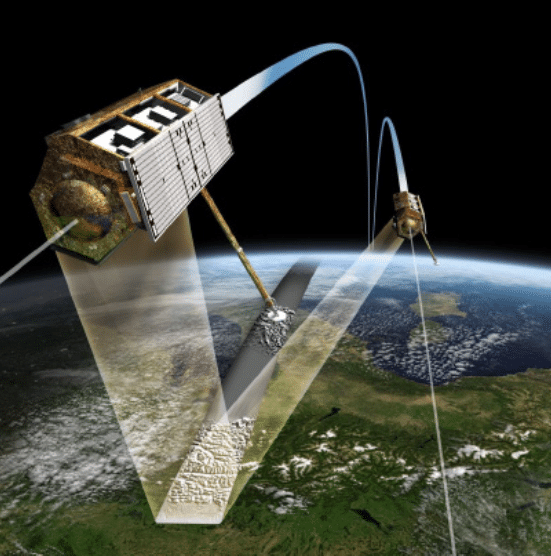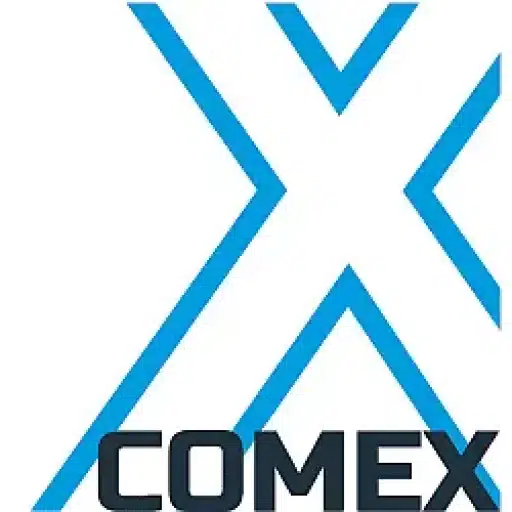+31 (0)43 30 88 400 | office@comex.eu
Case study
German Center for Aerospace Research (DLR).
The German satellite data archive stores the data of Earth exploration satellites with a dual-vendor setup. However, the tape-based solution is no longer being further developed by the manufacturer. Since additional data growth is to be expected from future missions, an equivalent replacement had to be found. New virtual tape libraries were to be the solution for the transition from the existing archive media because this would also achieve shorter waiting times when calling the data.

“Thanks to hard disk-based technology, we can now forgo further, faster copy on hard disks.“
Stephan Schropp, IT manager D-SDA, German Aerospace Center (DLR)
TanDEM-X
All photos: German Center for Aerospace Research (DLR).
SB Story DLR | Feb 2020
Archiving satellite data securely
DLR adds FAST LTA’s Silent Brick system to its archive
As the research center of the Federal Republic of Germany, the German Aerospace Center (DLR) provides research and development work for aeronautics, space, energy, traffic, security and digitalization. In addition to its own research, the DLR, as a space institute commissioned by the German government, is responsible for the planning and implementation of German space activities. The Oberpfaffenhofen location near Munich is home to the Earth Observation Center (EOC). Here answers to urgent questions in the areas of environment and climate, mobility and planning, prevention and management of natural disasters and civil security are sought by means of remote sensing. Part of the EOC is the German satellite data archive (D-SDA). Satellite data receiving stations distributed around the world forward their data to the EOC where they are stored and archived for a long time. The data of the very rapidly growing, currently about 20 Petabytes large archive are stored with a pre-switched hard disk cache via a hierarchical storage management system. Two copies of the data must be stored on different storage technologies. Since one of the two tape technologies used to date has been declared end-of-life by the manufacturer, the DLR chose to evaluate FAST LTA’s Silent Brick system. In addition to the required technology break, Silent Bricks also offer significant speed advantages.
The German satellite data archive is the central component of numerous national and international space missions for Earth observation. It has been maintained in this form since the mid-1990s. Various satellites, which produce acquired data using optical methods, X-ray technology, spectrography and radar, provide scientists with the basis for their investigations. For example, the change of all glaciers worldwide over the past 30 to 40 years can be precisely examined. These data are also used for economic applications, urban planning, agriculture and forestry or for environmental impact assessment. Correspondingly extensive is the experience at the D-SDA regarding the archiving of large amounts of data. Stephan Schropp, as IT manager, is already responsible with several colleagues for the concept, optimal setup and adaptation of the archive environment.
Seven years of data collection – saving for eternity
The satellites are scheduled for seven years of use, during which time they orbit the Earth. During this time – and sometimes a few years longer – they collect their data and regularly send them to the S-DSA. The archiving of these satellite data must be for and as long as possible to allow the analysis of historical data for future challenges as well. The data management is done with an in-house developed software. The data are first stored on a hard disk cache and then redundantly archived to two different tape technologies and locations in order to minimize the risk of data loss. To date, in addition to the LTO6/7 tape systems, the however tape-based solution from Oracle Storagetek STK T10000 has been used. However, this is no longer being further developed. “We have seen a change in the market for some time. With tapes, the number of different drive manufacturers has only decreased in recent years, so that a dual-vendor strategy, which is common in long-term archiving, is no longer sustainable,” explained IT Manager Stephan Schropp. “For certain data from current missions, low read latency must also be achieved.” New types of virtual tape libraries may be the solution for the transition to new archive media.
Silent Bricks offer faster access than tape
On the advice of the experts from the system integrator Navum GmbH from Wörthsee near Munich, who have supported the DLR in managing the archive for many years, the choice fell on the Silent Brick System from FAST LTA. “This allows us to continue our dual-vendor strategy” says Schropp. The Silent Bricks can be deployed as a Virtual Tape Library. This allows integration into the existing environment without major modifications to the existing archive software. “Thanks to the hard disk-based technology, we can now dispense with a further, faster copy on hard disks.” rejoices Stephan Schropp. This was previously necessary to ensure fast access to archive data, but was only possible for a small part of the data due to the higher price and energy consumption. However, fast random access to more and more data is becoming increasingly important for future applications. This requirement can already be met now with the solution of FAST LTA. By switching off non-active Silent Bricks, the access times known from hard disks can be achieved with low energy consumption; the energy balance is thus comparable to that of a tape archive. “We could observe significantly shorter waiting times when reading data from the archive compared to the old solution” explains Stephan Schropp. The first Silent Brick systems were installed without any interruption of production at the Oberpfaffenhofen and Neustrelitz sites in January 2019. “The three systems have been running reliably and without attracting attention ever since. It is a very well-suited solution for us.” declares Schropp with satisfaction.
“The Silent Brick system allows us to continue our dual-vendor strategy. The 3 systems run reliably and without needing attention. “
Stephan Schropp, IT manager D-SDA, German Aerospace Center (DLR)
10 PB growth per year
“We expect a data growth of up to 10 petabytes per year due to current and new satellite missions,” Schropp said. Future plans include integrating technologies such as Silent Bricks as an integral part of the archiving strategy and thus making DLR’s satellite data future-proof for research and economy. For this purpose, DLR and Navum are working together with FAST LTA to further develop the Silent Brick system and a new storage system optimized especially for very large VTL archives.
Challenges
The German satellite data archive stores the data of Earth exploration satellites with a dual-vendor setup. However, the tape-based solution is no longer being further developed by the manufacturer. Because replenishment from future missions is expected to result in significant growth of data, an equivalent replacement had to be found. New virtual tape libraries were to be the solution for the transition from the existing archive media because this would also achieve shorter waiting times when calling up the data.
Solution
- 3 Silent Brick systems at 2 locations for select dates
- Replacement of the Enterprise Tape Drives with a new FAST LTA VTL archive developed for very large amounts of data
Industry
- Science/aerospace
Applications
- Proprietary archive software / HSM
Partner
- NAVUM GmbH


